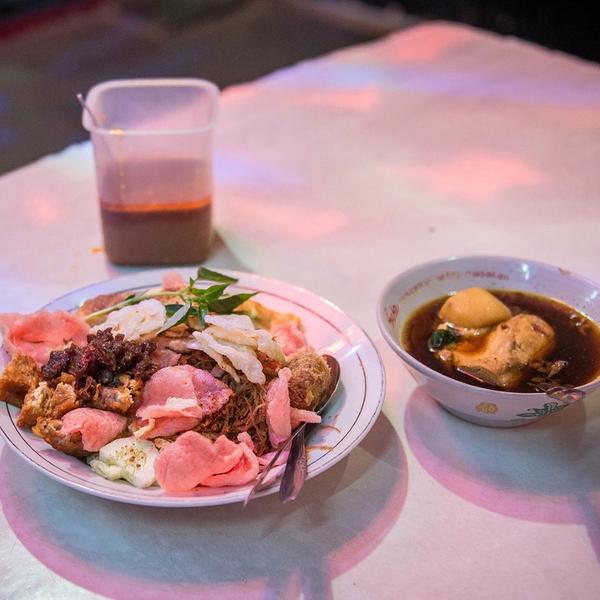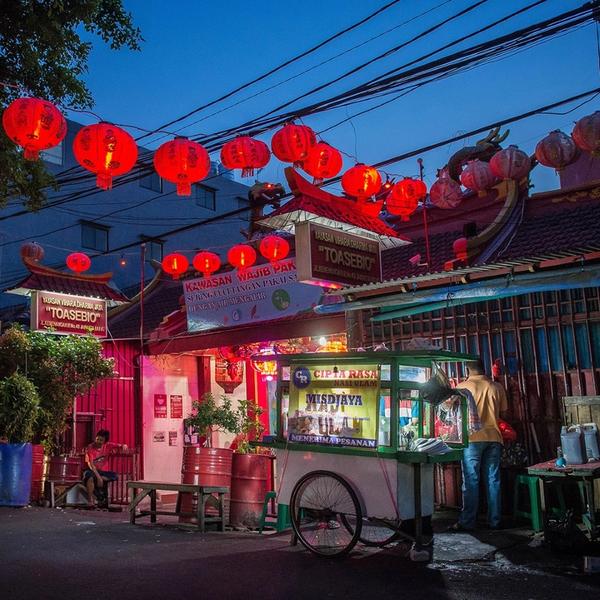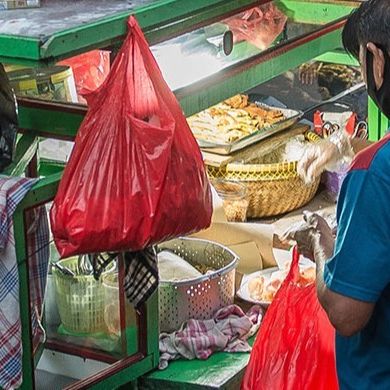
Sino-Indonesian fusion flavours with a touch of Dutch





- Jl. Kemenangan III No. 11
- Open daily 4.30am - sold out (closed on Sun)
- +62 856 9185 3154
The secret of the recipe is that the soup has to cook for more than twelve hours.
Betawi fusion cuisine
Nasi ulam is a typical betawi fusion dish. Its roots lay in the multi-ethnic potpourri of 17th-century Jakarta, when Malay, Sundanese, Javanese, Balinese, Minangkabau, Bugis, Makassarese, Ambonese, Mardijker, Portuguese, Dutch, Arabic, Chinese and Indian people lived here. Betawi cuisine reflects the foreign culinary traditions of this eclectic ethnic mix.
Secret recipe
The base for nasi ulam is nasi lemak, rice cooked in coconut milk. What makes this dish so unique is its hearty stew based on a traditional Dutch soup recipe. It's then garnished with kemangi (herb, chilli, sliced cucumber) and dendeng sapi (beef jerky) and topped off with a sprinkle of peanuts and kerisik (grated coconut). "The secret of the recipe is that the soup has to cook for more than twelve hours," restaurant owner Pak Misdjaya explains. He took over the business from tits original Chinese owner, Cek Lam Seng.
Our favourites
Have your nasi ulam garnished with dendeng (beef jerky) or salty, crunchy squid (Rp. 30.000) for maximum enjoyment. Fun fact: this is allegedly the former Governor of Jakarta's favourite dish.
